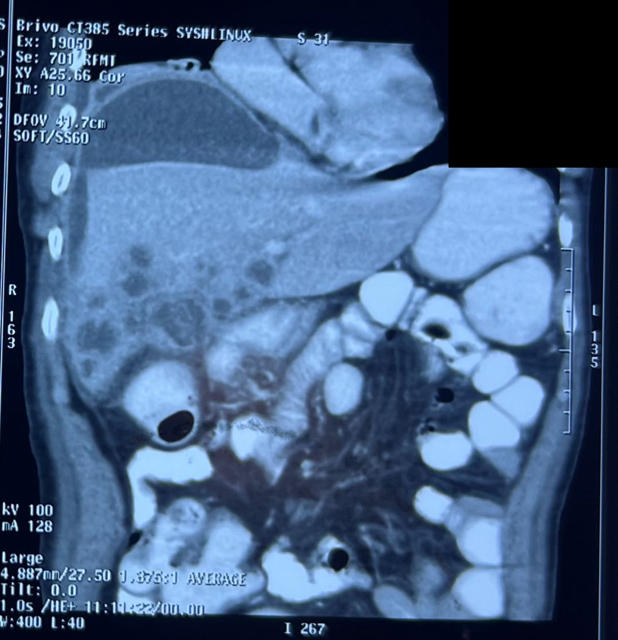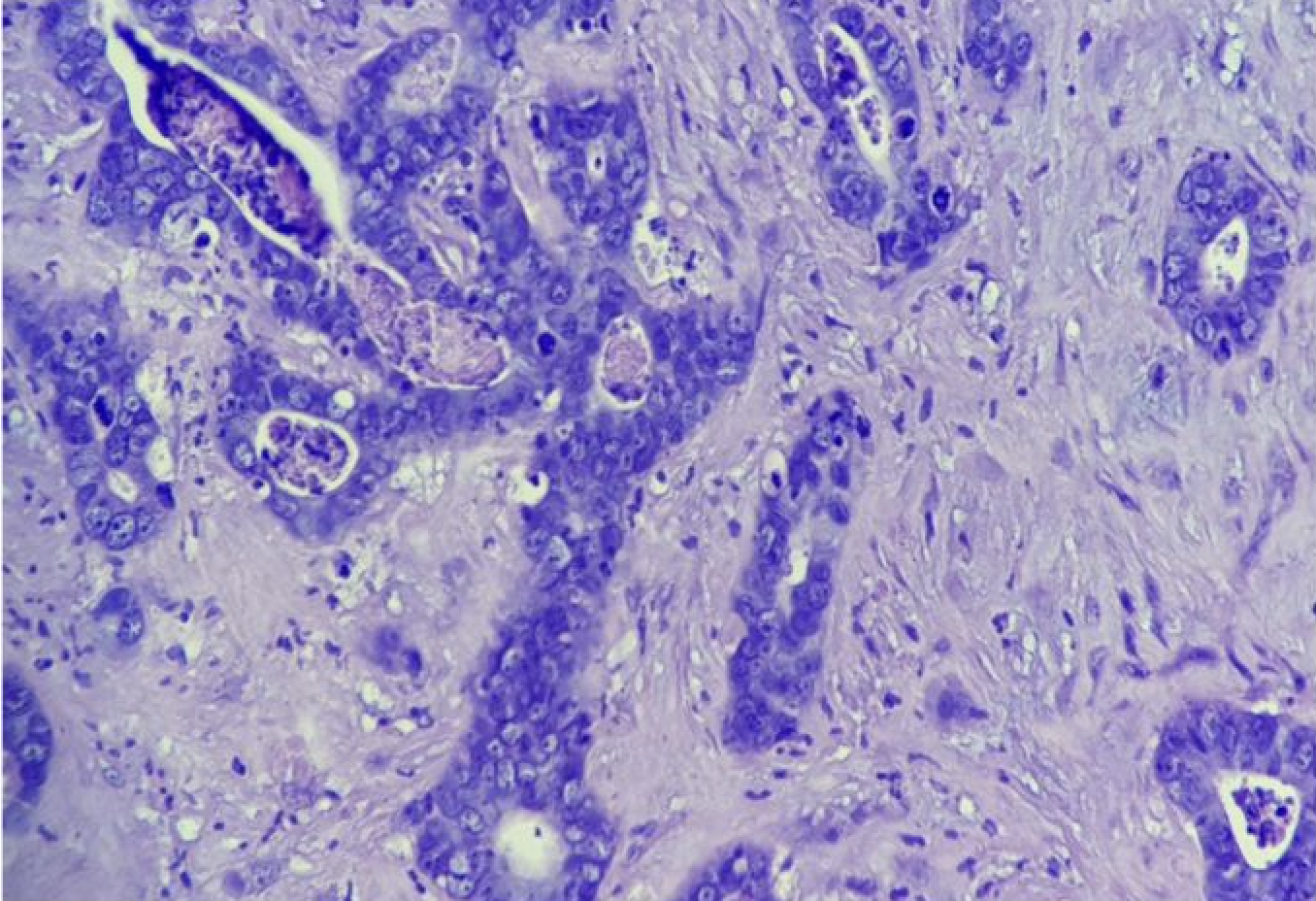Monday Poster Session
Category: Biliary/Pancreas
P2379 - Late-Presented Biliary Carcinoma Following Chronic Cholelithiasis: Surgical and Public-Health Lessons From Guatemala’s Highlands
Monday, October 27, 2025
10:30 AM - 4:00 PM PDT
Location: Exhibit Hall

Isidro Pérez Coché, MD, MSc (he/him/his)
Hospital Nacional de Uspantán, Quiché, Guatemala C.A.
Guatemala, Solola, Guatemala
Presenting Author(s)
Isidro Pérez coché, MD, MSc1, Carlos Fernando. Funez López, MD, MSc2, Katherine Estefanía Palacios Rosales, MD, MSc2, Michael López Santos, MD3, Bernardo D. Lopez Samayoa, MD, MPH4
1Hospital Nacional de Uspantán, Quiché, Guatemala C.A., Guatemala, Solola, Guatemala; 2Hospital Nacional de Uspantán, Quiché, Guatemala C.A., Quiche, Quiche, Guatemala; 3Universidad San Carlos de Guatemala, Uspantan, Quiche, Guatemala; 4Johns Hopkins Bloomberg School of Public Health, San Bernardino, CA
Introduction: Liver and biliary malignancies account for roughly one-fifth (≈ 20 %) of all cancer-related deaths in Guatemala, compared with ~8 % worldwide. Gallbladder cancer—strongly associated with chronic cholelithiasis—remains a leading cause of cancer mortality among Guatemalan women (14 deaths per 100,000). Outside major cities, access to screening ultrasound and prophylactic cholecystectomy is scarce, so patients frequently present with complications and experience stage migration to unresectable disease.
Case Description/
Methods: A 53-year-old farmer from Chicamán in the Guatemalan highlands presented with one-week right upper quadrant pain, fever, and profound weight loss. He had had untreated gallstones for more than two years. Examination revealed cachexia and localized peritonism. Contrast CT demonstrated a 337-cc subhepatic abscess around a perforated, stone-laden gallbladder and several firm lesions in hepatic segments VI–VIII (Fig. 1). Emergency laparotomy evacuated 200 cc of purulent fluid, retrieved two free intraperitoneal calculi, and achieved partial cholecystectomy with drainage. Core biopsies of the hepatic masses were obtained. Histopathology revealed a moderately differentiated adenocarcinoma of gallbladder origin with direct hepatic invasion (Fig. 2). Broad-spectrum antibiotics produced clinical recovery; staging CT confirmed unresectable metastatic biliary carcinoma, and the patient was referred for systemic therapy.
Discussion: This case illustrates the well-described carcinogenic sequence of chronic gallstone–induced inflammation progressing to gallbladder cancer, amplified by limited surgical access in rural Guatemala. Missed elective cholecystectomy and absent surveillance allowed silent malignant transformation until catastrophic perforation forced emergent care. Earlier ultrasound screening and subsidized referral pathways could have intercepted disease at a curable stage. National programs that prioritize rural hepatobiliary screening—especially for symptomatic cholelithiasis—are essential to reduce a preventable cancer that remains a disproportionate killer in Guatemala.

Figure: Coronal contrast CT demonstrating a large subhepatic abscess surrounding a perforated, stone-laden gallbladder (oval hyperdensities), with adjacent hypoattenuating hepatic lesions suggestive of tumour invasion.

Figure: H&E-stained liver biopsy showing malignant epithelial proliferation with complete, anastomosing glandular structures embedded in a desmoplastic stroma—features consistent with moderately differentiated adenocarcinoma.
Disclosures:
Isidro Pérez coché indicated no relevant financial relationships.
Carlos Funez López indicated no relevant financial relationships.
Katherine Estefanía Palacios Rosales indicated no relevant financial relationships.
Michael López Santos indicated no relevant financial relationships.
Bernardo Lopez Samayoa indicated no relevant financial relationships.
Isidro Pérez coché, MD, MSc1, Carlos Fernando. Funez López, MD, MSc2, Katherine Estefanía Palacios Rosales, MD, MSc2, Michael López Santos, MD3, Bernardo D. Lopez Samayoa, MD, MPH4. P2379 - Late-Presented Biliary Carcinoma Following Chronic Cholelithiasis: Surgical and Public-Health Lessons From Guatemala’s Highlands, ACG 2025 Annual Scientific Meeting Abstracts. Phoenix, AZ: American College of Gastroenterology.
1Hospital Nacional de Uspantán, Quiché, Guatemala C.A., Guatemala, Solola, Guatemala; 2Hospital Nacional de Uspantán, Quiché, Guatemala C.A., Quiche, Quiche, Guatemala; 3Universidad San Carlos de Guatemala, Uspantan, Quiche, Guatemala; 4Johns Hopkins Bloomberg School of Public Health, San Bernardino, CA
Introduction: Liver and biliary malignancies account for roughly one-fifth (≈ 20 %) of all cancer-related deaths in Guatemala, compared with ~8 % worldwide. Gallbladder cancer—strongly associated with chronic cholelithiasis—remains a leading cause of cancer mortality among Guatemalan women (14 deaths per 100,000). Outside major cities, access to screening ultrasound and prophylactic cholecystectomy is scarce, so patients frequently present with complications and experience stage migration to unresectable disease.
Case Description/
Methods: A 53-year-old farmer from Chicamán in the Guatemalan highlands presented with one-week right upper quadrant pain, fever, and profound weight loss. He had had untreated gallstones for more than two years. Examination revealed cachexia and localized peritonism. Contrast CT demonstrated a 337-cc subhepatic abscess around a perforated, stone-laden gallbladder and several firm lesions in hepatic segments VI–VIII (Fig. 1). Emergency laparotomy evacuated 200 cc of purulent fluid, retrieved two free intraperitoneal calculi, and achieved partial cholecystectomy with drainage. Core biopsies of the hepatic masses were obtained. Histopathology revealed a moderately differentiated adenocarcinoma of gallbladder origin with direct hepatic invasion (Fig. 2). Broad-spectrum antibiotics produced clinical recovery; staging CT confirmed unresectable metastatic biliary carcinoma, and the patient was referred for systemic therapy.
Discussion: This case illustrates the well-described carcinogenic sequence of chronic gallstone–induced inflammation progressing to gallbladder cancer, amplified by limited surgical access in rural Guatemala. Missed elective cholecystectomy and absent surveillance allowed silent malignant transformation until catastrophic perforation forced emergent care. Earlier ultrasound screening and subsidized referral pathways could have intercepted disease at a curable stage. National programs that prioritize rural hepatobiliary screening—especially for symptomatic cholelithiasis—are essential to reduce a preventable cancer that remains a disproportionate killer in Guatemala.

Figure: Coronal contrast CT demonstrating a large subhepatic abscess surrounding a perforated, stone-laden gallbladder (oval hyperdensities), with adjacent hypoattenuating hepatic lesions suggestive of tumour invasion.

Figure: H&E-stained liver biopsy showing malignant epithelial proliferation with complete, anastomosing glandular structures embedded in a desmoplastic stroma—features consistent with moderately differentiated adenocarcinoma.
Disclosures:
Isidro Pérez coché indicated no relevant financial relationships.
Carlos Funez López indicated no relevant financial relationships.
Katherine Estefanía Palacios Rosales indicated no relevant financial relationships.
Michael López Santos indicated no relevant financial relationships.
Bernardo Lopez Samayoa indicated no relevant financial relationships.
Isidro Pérez coché, MD, MSc1, Carlos Fernando. Funez López, MD, MSc2, Katherine Estefanía Palacios Rosales, MD, MSc2, Michael López Santos, MD3, Bernardo D. Lopez Samayoa, MD, MPH4. P2379 - Late-Presented Biliary Carcinoma Following Chronic Cholelithiasis: Surgical and Public-Health Lessons From Guatemala’s Highlands, ACG 2025 Annual Scientific Meeting Abstracts. Phoenix, AZ: American College of Gastroenterology.
